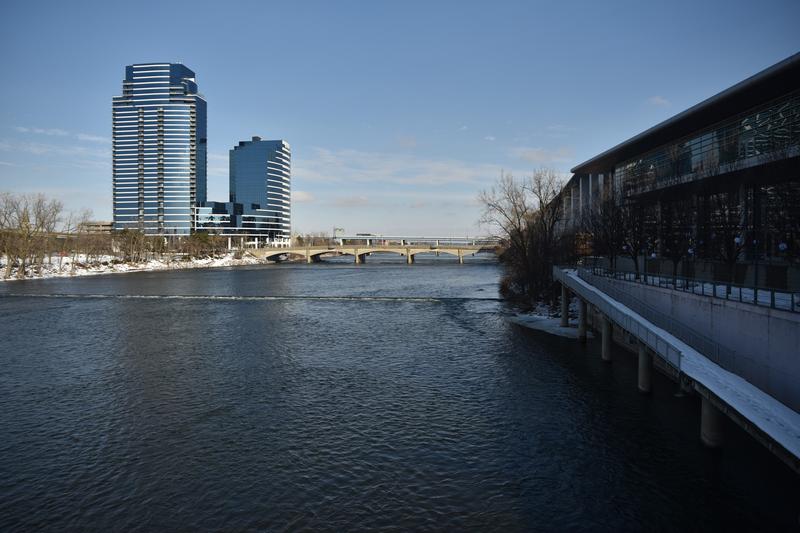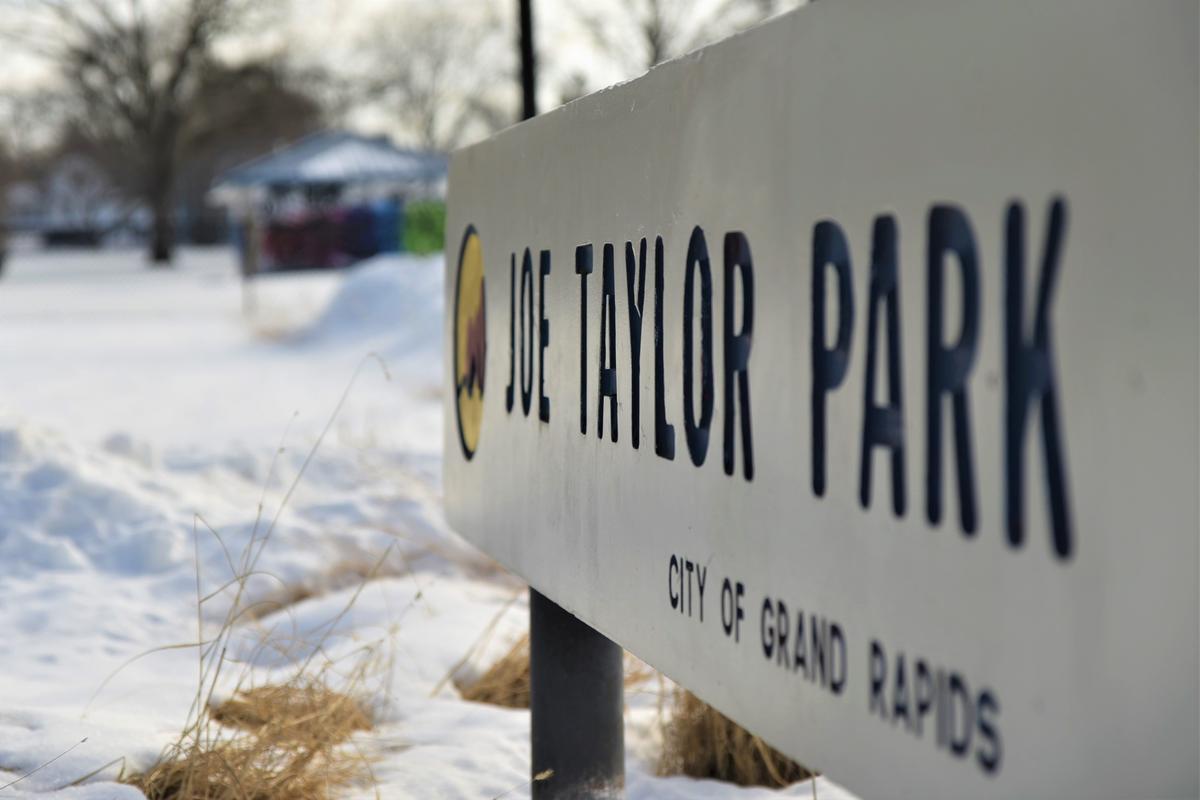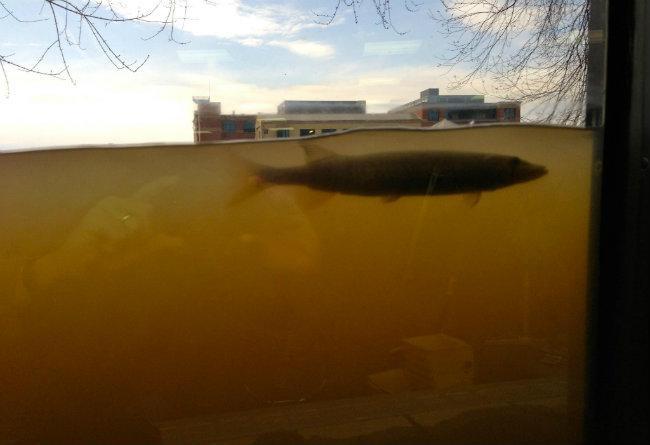Grand Rapids Turns to Natural Infrastructure To Deal With Extreme Rain Events
The city, which got a wake-up call a few years ago after a big flood, is thinking about ways to capture stormwater runoff in every construction project.

Climate change in the Great Lakes region means more intense storms. Already some towns are finding they’re flooding where they never have before. One city in Michigan is finding the solution is nature.

The Joe Taylor park is tucked into a small neighborhood in Grand Rapids. The buildings have colorful murals, and there’s a splash pad for hot summer days. But you can’t see the really interesting stuff.
Below ground there’s 270,000 gallons worth of water storage. When a rainstorm comes along, the water from the surrounding neighborhood ends up there.
“It’s at the bottom of the hill, so it can take in 40 acres of urban runoff,” says Carrie Rivette, the Wastewater and Stormwater Maintenance Superintendent for the City of Grand Rapids.
The park’s underground storage holds the water to give it time to soak into the earth.
“I like to say we’re mimicking Mother Nature. We’re soaking in the water and close to where it lands, getting it to the ground water, slowly cleaning it up before it gets to the river and then slowly trickling into the river. So we don’t have problems downstream,” Rivette explains.

Grand Rapids is thinking about ways to capture stormwater runoff in every construction project. For example, if a road needs to be resurfaced, where there’s street parking Grand Rapids uses permeable concrete to allow rain water to soak through it and into the ground.
Alison Waske Sutter, the Sustainability and Performance Management Officer for Grand Rapids, says the city got a wake-up call a few years ago when there was a big flood.
“When that happened in 2013 and we had commercial buildings downtown that were shut down and had very large claims, basements, flooding and just a lot of damage … that’s still pretty fresh, even though it feels like it was almost 10 years ago,” she says.
Since then, Grand Rapids has been looking at more green space, parks and other ways throughout the city to slow the runoff.
It’s difficult to measure, but Grand Rapids estimates it’s diverting a few million gallons of water into the ground that otherwise would go into pipes rushing to the river.
But in some places that’s challenging, such as the central business district.
“OK, we can’t just have parking lots and rooftops in our downtown core, otherwise there’s nowhere for the water to go,” Sutter says.

So, the city is considering policies that would require developers to create green space somewhere else when their building project covers up green space. It wants more parking lots to be made with permeable surfaces. It encourages rooftop gardens where that’s possible. Grand Rapids says it’s got a long way to go, but it’s already way ahead of most municipalities.
“We need to start thinking about this because many cities have not even had that conversation yet,” says Maria Lemos, a co-director of the Great Lakes Integrated Sciences and Assessments (GLISA), a collaboration between the University of Michigan and Michigan State University.
It helps cities plan for a future in which there’s more stormwater runoff because of climate change. It’s been working with Great Lakes Climate Adaption Network, a group of cities learning from GLISA and each other how to best approach to adapt to the region’s climate future.

She says until now, cities have been looking to the past to determine how to handle the water.
“So they have a historical data of the worst things that have happened to the city and depending on how much resources you have, you scope your project based on that experience,” she explains.
But when your future means even more intense storms and higher precipitation, that’s not going to work. Even the best predictive models vary. You can’t really know exactly how much bigger your stormwater pipes need to be. And if you overbuild, it can be very expensive.
Lemos says her group has some tools to help guide cities. A good number of forward-thinking communities are working on the problem. But others are relying on the same approaches they’ve used in the past.
“I think a lot of municipalities are trying to build their way out of this with gray infrastructure,” says Mike Shriberg, the regional executive director of the National Wildlife Federation’s Great Lakes Regional Center.
By gray infrastructure, he means bigger concrete pipes and the like.
“One: that’s an extraordinarily expensive way of doing it; two: you’re just not going to be able to keep building out that way. And that’s why our emphasis has been on the green infrastructure side.”
Which he says beats tearing up the streets for weeks or months for new pipes and the expense that goes with that.
“When you go with the green infrastructure, when you go with wetlands, when you go with rain gardens at homes, you actually get, you know, benefits for wildlife habitat, you know, parks, all these different things,” he said.
Few people are likely to complain about more parks.
This is not the end of big concrete pipes handling stormwater. That will still be a necessary expense in some places.
But more green spaces and using materials for parking lots that allow the rain water to soak into the earth can go a long way in reducing the impact of flooding caused by climate change.
